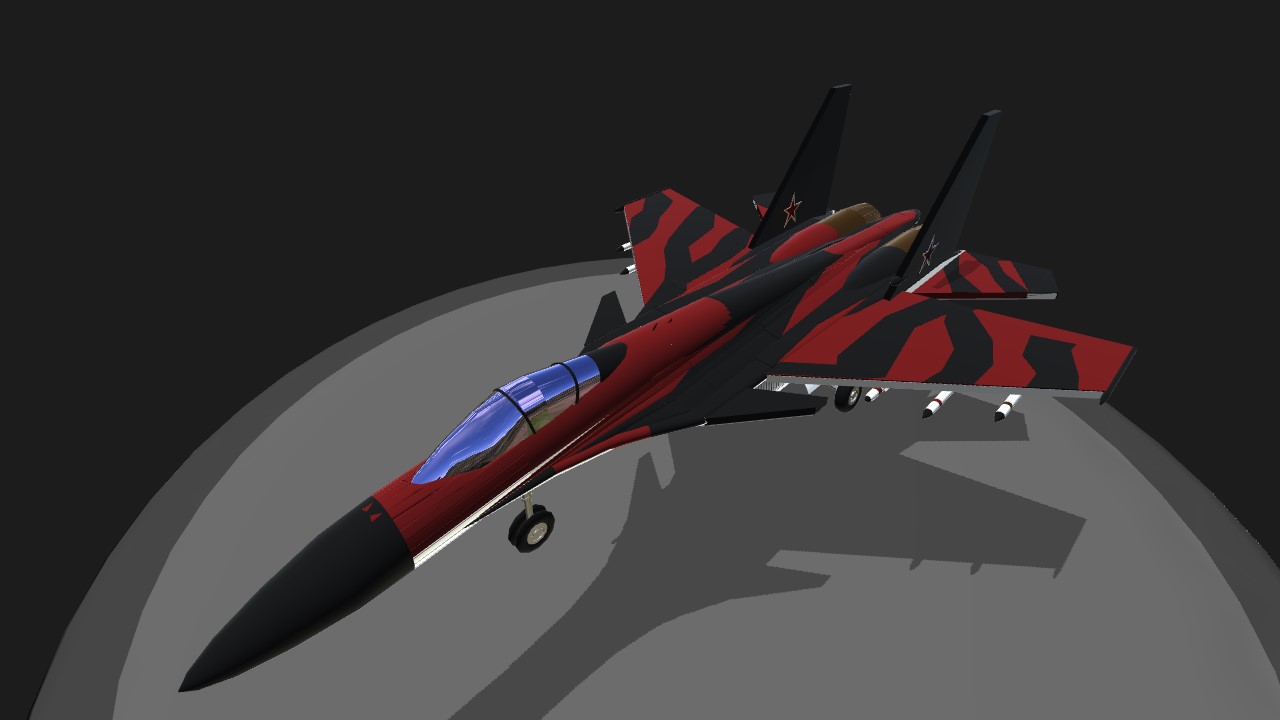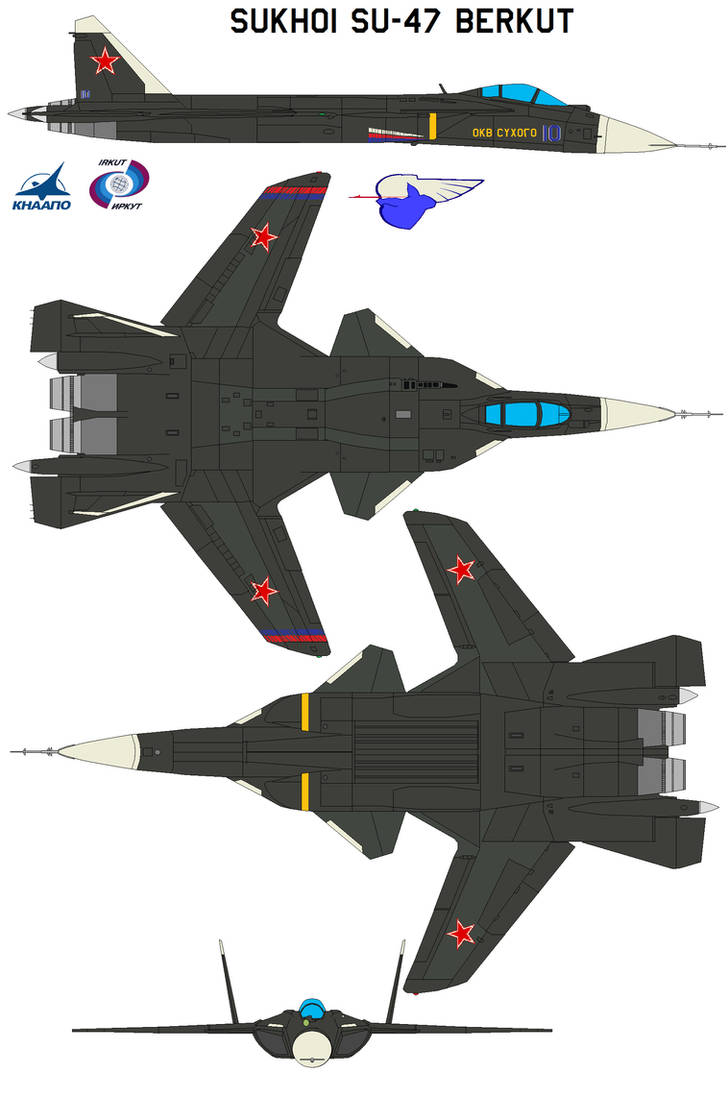Su-37 Thrust Vectoring - Thrust vectoring, also known as thrust vectoring control (TVC), is the ability of an aircraft, missile, or other vehicle to manipulate the direction of thrust from its engine(s) to control attitude or angular velocity. in the vehicle.
In missiles and ballistic missiles flying outside the atmosphere, aerodynamic control surfaces are ineffective, so thrust vectoring is the primary means of attitude control. Robert Goddard used exhaust vanes and gimbal engines in the 1930s.
Su-37 Thrust Vectoring

For aircraft, the method was originally intended to provide vertical upward thrust as a means of providing the aircraft with vertical (VTOL) or short (STOL) takeoff and landing. It was later realized that the use of thrust vectoring in combat situations allowed the aircraft to perform several maneuvers not available in conventionally powered aircraft. To turn, aircraft that do not use thrust vectoring must rely only on aerodynamic control surfaces, such as ailerons or elevators; plane and vectorization must still use control surfaces, but to a lesser extent.
Sukhoi Su 37 By Themilitarybrat5000 On Deviantart
Nominally, the line of action of the thrust vector of the rocket nozzle passes through the center of mass of the vehicle, creating zero neutral moment at the center of mass. It is possible to generate pitch and yaw moments by deflecting the main thrust vector of the rocket so that it does not pass through the center of mass. Since the line of action is generally oriented nearly parallel to the roll axis, roll control usually requires the use of two or more separate hinged nozzles or a completely separate system, such as fins or vanes in the rocket exhaust, deflection. main thrust. Thrust Vector Control (TVC) is only possible when the propulsion system is generating thrust; separate mechanisms are required to control position and flight path during other phases of flight.
Thrust vectoring for many liquid rockets is accomplished by turning the entire engine. These include moving the rubber combustion chamber and outer bell of the engine as on the Titan II twin first stage engine, or the rubber engine assembly including the fuel pump and associated oxidizer. The Saturn V and the Space Shuttle used gimbal engines.
A method later developed for solid-propellant ballistic missiles achieves vector thrust by deflecting only the rocket nozzle using electric actuators or hydraulic cylinders. The nozzle is attached to the projectile via a ball joint with a hole in the center, or a flexible seal made of heat-resistant material, the latter generally requiring more torque and more power from the propulsion system. The Tridt C4 and D5 systems are controlled via hydraulic nozzles. STS SRB used gimbal jets.
Another method of thrust vectoring used on solid-propellant ballistic missiles is liquid injection, where the rocket nozzle is fixed but the liquid is introduced into the exhaust pipe flow from injectors positioned around the rear of the rocket. If fluid is injected on one side of the projectile, it modifies that side of the exhaust gases, causing a different thrust on that side and an asymmetric net force on the projectile. This was the control system used on the Minuteman II and early US Navy SLBMs.
All Of The Reasons Why America Should Fear Russia's Su 35 Fighter
An effect similar to thrust vectoring can be produced with multiple vernier thrusters, small auxiliary combustion chambers that do not have their own turbopumps and can be mounted on a single axis. They were used on the Atlas and R-7 rockets and are still used on the Soyuz rocket, which is derived from the R-7, but are rarely used on new designs due to their complexity and weight. These differ from the thrusters of the reaction control system, which are fixed and independent rocket engines are used for maneuvering in space.
One of the earliest methods of thrust vectoring in rocket engines was to insert spokes into the engine's exhaust stream. These exhaust vanes or jet vanes provide thrust rejection without moving any part of the engine, but reduce the rocket's efficiency. They have the advantage of allowing roll control with only one motor, which a gimbal nozzle cannot. The V-2 used graphite exhaust vanes and aerodynamic vanes, just like the Redstone, derived from the V-2. Hobby group Cophag Suborbitals' Sapphire and Nexo rockets are a modern example of jet blades. Wind nozzles must be made of refractory material or actively cooled to prevent melting. Sapphire used solid copper blades for the high heat capacity and thermal conductivity of copper, and Nexo used graphite for its high melting point, but if not cooled, the blades will undergo significant erosion. This, combined with the inefficiency of jet blades, largely precludes their use in new rockets.
Some smaller tactical surface-to-air missiles, such as the AIM-9X Sidewinder, eschew flight control surfaces and instead use mechanical vanes to deflect rocket engine exhaust to one side.

Using mechanical vanes to divert the exhaust gases of the rocket engine, the missile can be steered shortly after launch (the missile moves slowly, before reaching high speed). This is because even though the projectile is traveling at low speed, the rocket engine's exhaust valve has a high enough speed to provide sufficient force to the mechanical vanes. Thus, thrust vectoring can reduce the minimum range of the projectile. For example, anti-tank missiles such as the Eryx and PARS 3 LR use vectored thrust for this purpose.
Sukhoi Su 37 इतिहास देखें अर्थ और सामग्री
Most well-functioning vector thrusters use turbofans with rotating nozzles or spokes to deflect the exhaust gas stream. This method can successfully deviate the thrust by as much as 90 degrees, relative to the aircraft's ctrelines. However, the engine must be sized for vertical lift rather than normal flight, resulting in low weight. The afterburner (or Plum Chamber Burning, PCB, in bypass current) is difficult to install and is not practical for dust vectors with takeoff and landing, as very hot exhaust gases can damage the runway surface. Without afterburner it is difficult to achieve supersonic flight speed. The PCB engine, Bristol Siddeley BS100, was canceled in 1965.
Tiltrotor vector thrust through rotating turboprop nacelles. The mechanical complexity of this design is quite problematic, including the flexible twisting of internal components and the transmission of drive shaft power between motors. Most currt designs of tilt motors have two rotors in a side-by-side configuration. If such an aircraft is flown in a vortex ring, one of the rotors will always stall slightly before the other, causing the aircraft to perform a high and unplanned roll.
Thrust vectoring is also used as a control mechanism for airships. An early application was the British Army's Delta airship, which first flew in 1912.
It was later used on HMA (Her Majesty's Airship) no. 9r, a British rigid airship that first flew in 1916.
Russia's Su 35 Spooks The U.s. Air Force. Here's What We Can Tell You.
And the US Navy's 1930 twin rigid airships USS Akron and USS Macon which were used as aircraft carriers, a similar thrust vector shape is also particularly valid today for controlling modern non-rigid airships. In this use, most of the load is usually supported by lift, and the thrust vector is used to control the aircraft's motion. The first airship to use a control system based on pressurized air was Rico Forlanini's Omnia Dir in the 1930s.
Percy Walwyn submitted an aircraft design incorporating vectored thrust to the British Air Ministry in 1949; Walwyn's drawings are preserved at the National Aerospace Library in Farnborough.
Official interest waned when he realized the designer was part of a metal hospital.

Tests show that when forced into a jet engine, the exhaust jet can deflect up to 15 degrees of thrust. These jets are desirable for their mass and lower cost (up to 50% less), inertia (for faster, stronger steering response), complexity (mechanically simpler, fewer or no moving parts or surfaces, less maintenance), and radar cross section for stealth. This is likely to be used in many sixth-generation unmanned aerial vehicles (UAVs) and fighters.
Incredible Jet Stunts That Are Barely Even Possible
Thrust Vector Flight Control (TVFC) is achieved by turning the aircraft in some or all of the pitch, pitch and roll directions. In extreme cases, deviation of the aircraft in yaw, pitch and roll creates the desired forces and moments that allow full control of the direction of the flight path of the aircraft without the application of conventional aerodynamic flight controls (CAFC). TVFC can also be used to maintain stationary flight in areas of the flight envelope where the main aerodynamic surfaces are blocked.
The TVFC includes STOVL control of the aircraft during steering and during the transition between steering speed and forward motion below 50 knots where the aerodynamic surfaces are ineffective.
When thrust vector control uses a single propulsion jet, as in a single-engine aircraft, the ability to produce rotating nozzles may not be possible. An example is a supersonic afterburner nozzle where the nozzle functions are throat area, exit area, pitch vector and yaw vector. These functions are controlled by four separate actuators.
When TVFC is applied to supplement CAFC, aircraft agility and safety are maximized. Increased safety can occur in the event of CAFC failure as a result of combat damage.
Sukhoi Su 35
For the application of TVFC various nozzles, both mechanical and
F 16 thrust vectoring, rc thrust vectoring, eurofighter typhoon thrust vectoring, thrust vectoring engine, thrust vectoring nozzle, thrust vectoring rc plane, f22 thrust vectoring, su 35 thrust vectoring, thrust vectoring motor mount, edf thrust vectoring, thrust vectoring nozzle design, thrust vectoring

0 Comments